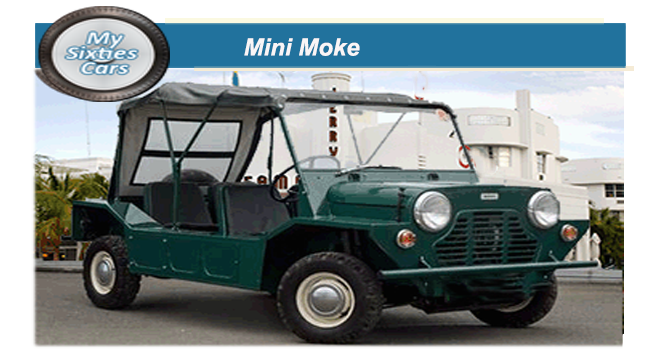
Among the “flakiest” cars that came into the world during the Sixties was undoubtedly the Mini Moke.
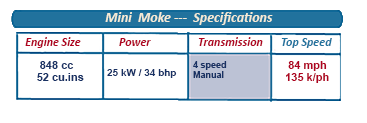 The “Moke” " an antiquated name for a donkey, was originally designed in the form of a lightweight military vehicle, although its 10” inch diameter wheels and the resultant lack of ground clearance soon put an end to that.
The “Moke” " an antiquated name for a donkey, was originally designed in the form of a lightweight military vehicle, although its 10” inch diameter wheels and the resultant lack of ground clearance soon put an end to that.
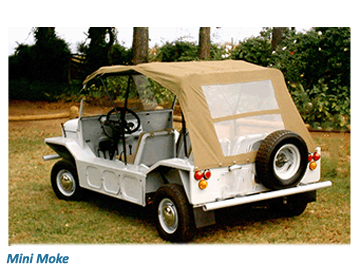 The only member of the British armed forces that showed any interest in the Mini Moke was the Royal Navy, who considered acquiring a few to get around on the decks of aircraft carriers.
The only member of the British armed forces that showed any interest in the Mini Moke was the Royal Navy, who considered acquiring a few to get around on the decks of aircraft carriers.
With that avenue closed to them, BMC decided instead to develop a civilian version, launched in 1964 at the height of “Mini Mania” in the UK.
The marketing team at BMC were initially unsure what to make of the Mini Moke promoting it as a low-cost and easily maintained utility vehicle, targeted at the agricultural industry as well as light commercial users.
If used in either of these sectors, the Mini Moke would have been exempt from purchase tax- if used as a private car, the ever vigilant British Customs and Excise ruled that the Moke would apply purchase tax, pushing the price up considerably.
![]()


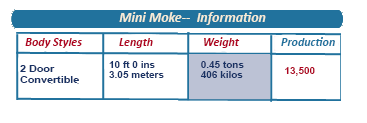 he Moke enjoyed its whatever limited success thanks to its cult status, regarded almost as a fashion accessory in a period where anything went.
he Moke enjoyed its whatever limited success thanks to its cult status, regarded almost as a fashion accessory in a period where anything went.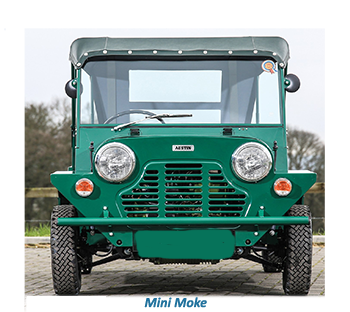 Long after the Mini Moke appeared to have faded into history, it enjoyed a rebirth in popularity in the early Eighties, when a local entrepreneur established a plant in Portugal to produce the Mini Moke under license.
Long after the Mini Moke appeared to have faded into history, it enjoyed a rebirth in popularity in the early Eighties, when a local entrepreneur established a plant in Portugal to produce the Mini Moke under license.



